Marshes are a unique landscape found in the southern region of Iraq, also known as Mesopotamia. This area is home to the famous Tigris and Euphrates rivers, which have created a network of wetlands and marshes that have been inhabited by humans for thousands of years. The Mesopotamian marshes cover an area of around 20,000 square kilometers and are the largest wetland ecosystem in the Middle East.
The Importance of Mesopotamian Marshes
The Mesopotamian marshes are a vital source of biodiversity and are home to a wide variety of plant and animal species, including many endangered species such as the Basra reed warbler and the Euphrates softshell turtle. The marshes also provide important ecosystem services such as water filtration, carbon storage, and fish production, which are critical for the livelihoods of the local communities
The Unique Architecture of Mesopotamian Marshes
The traditional Mesopotamia architecture of the marshes is unique and has evolved over centuries to adapt to the local environment. The traditional houses, known as mudhifs, are made of reeds and palm fronds and are designed to be lightweight and mobile, allowing them to be easily transported by boat. The mudhifs are also designed to be cool and comfortable, with a central open space that allows for natural ventilation and a raised floor to protect against flooding.
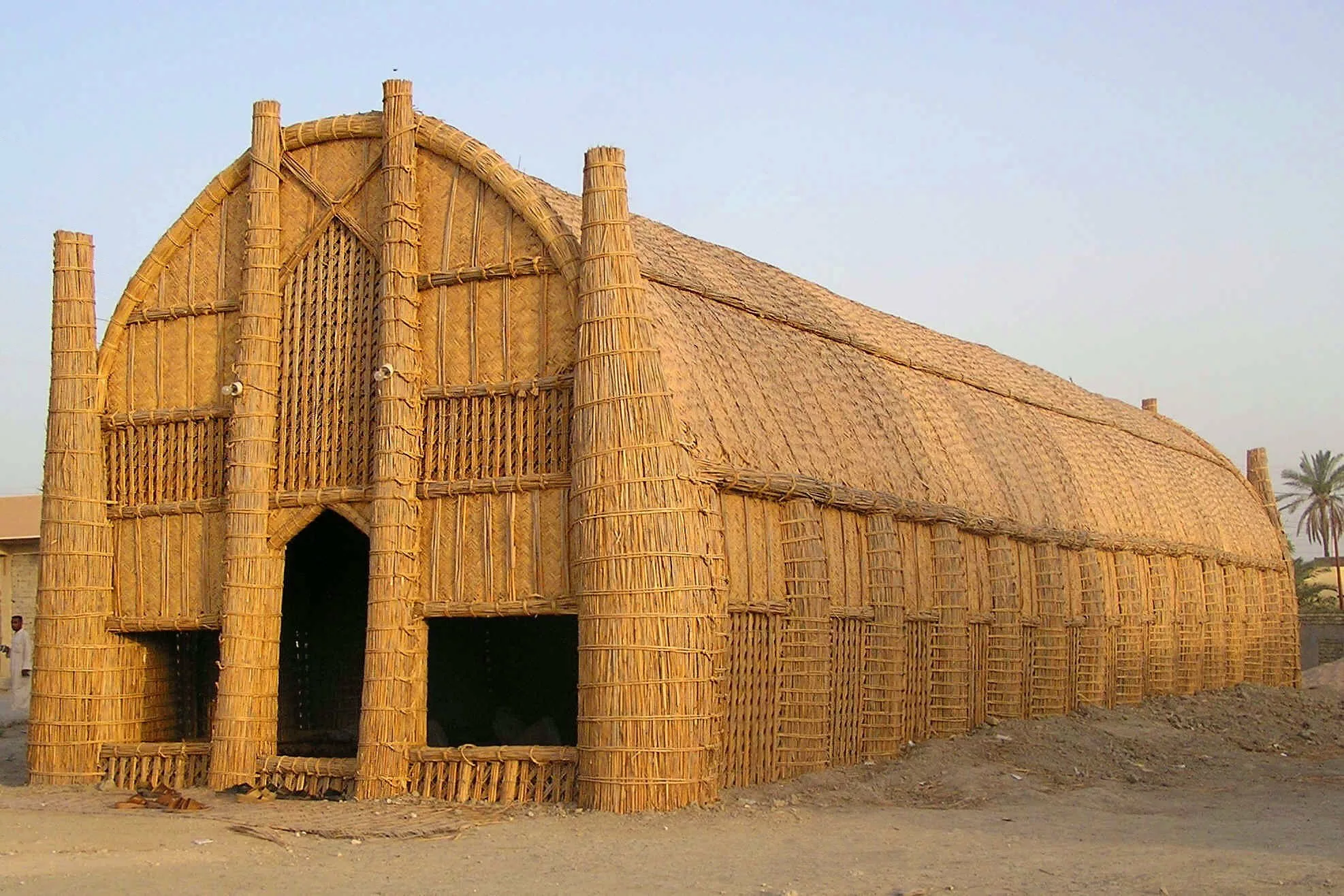
The mudhifs are not just homes but also serve as community centers where people gather for social events and to discuss local issues. These structures are an important part of the cultural heritage of the marshes and are a symbol of the resilience of the local communities who have adapted to living in this challenging environment.
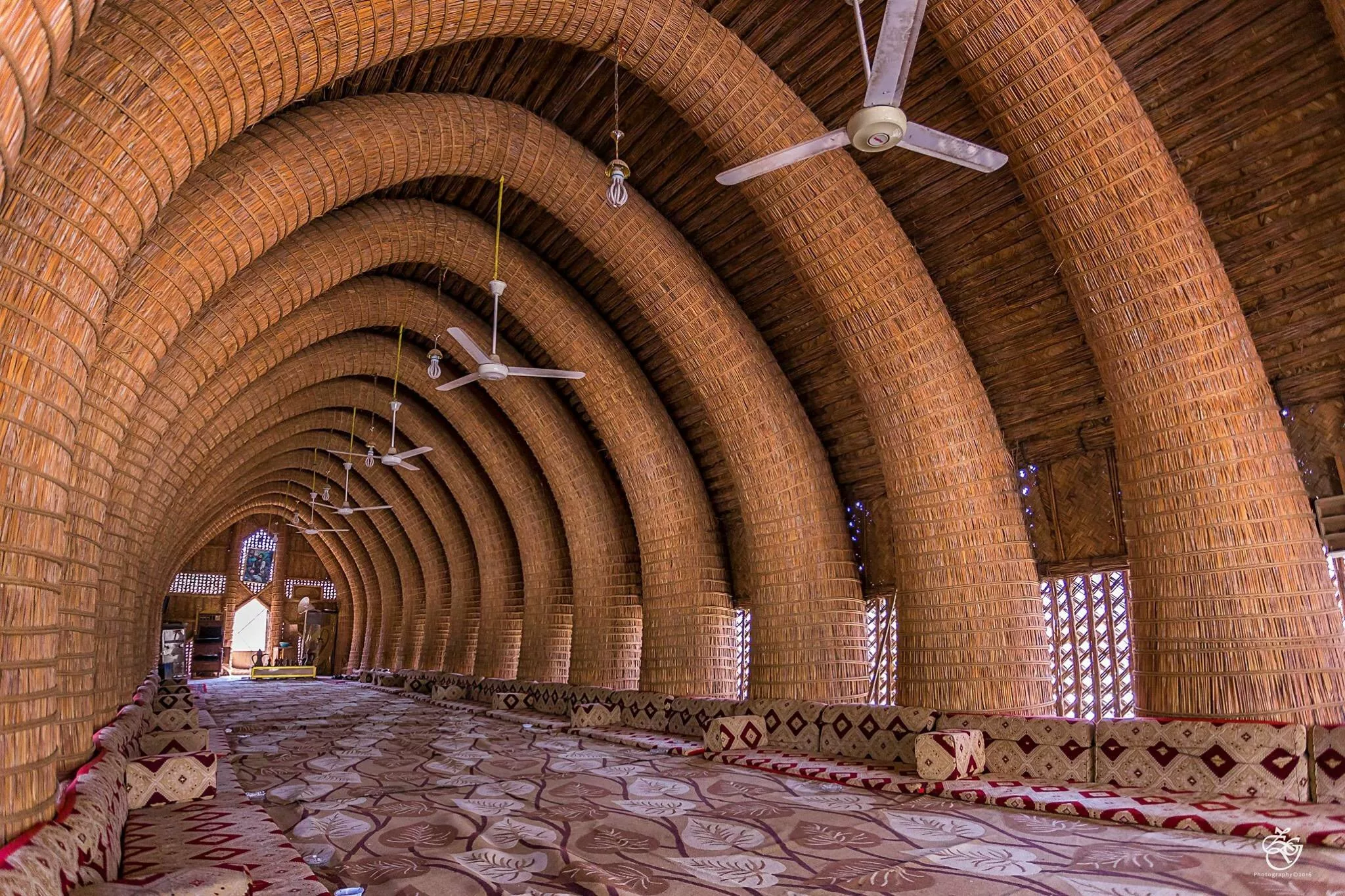
Sadly, the Mesopotamian marshes have been under threat in recent decades, due to a combination of factors including dam construction, drainage projects, and upstream water diversions. This has led to the loss of over 90% of the marshes and has had a devastating impact on the local communities who rely on them for their livelihoods.
Efforts are now underway to restore the Mesopotamian marshes and to preserve the unique architecture and cultural heritage of this region. These efforts include the construction of new mudhifs and the promotion of sustainable tourism, which can help to support the local economy while also raising awareness of the importance of preserving this unique ecosystem.
The Mesopotamian Marshes and the Madan Culture
As we mentioned above, The Mesopotamian marshes are located at the confluence of two rivers: the Tigris and the Euphrates. The picturesque wetlands with their golden slim reeds and houses built on floating islands have a history going back to the Sumerian civilization. The inhabitant “Madan” culture was formed by its coexistence with the marshlands, and their fascinating lifestyle had been preserved for more than 5,000 years. For ages, they have navigated their villages by traditional mashoofs (canoes), raised buffalos, relied on fishing and agriculture, and planted rice, fruits, vegetables, and palm trees. Their houses were built of bundles of reeds and mud mounds called “kibasha”. These marshes were also known for their biodiversity and for being home to different species of birds.

The proposed design intends to provide a conceptual framework to organize the marsh communities of Southern Iraq into a modern and economically viable entity while addressing the most critical ecological concerns. While preserving the tradition of fishing and farming, the proposal recommends technologies to produce organic food and potable water, generate green energy, clean the marshes’ water, treat waste, and even cultivate fish. It is conceived to inspire the indigenous people to be engaged in restoring the deteriorated ecosystem of the marshes to accelerate the return of people and natural habitats.

A Conceptual Framework for Sustainable Development of The Marshes
The envisioned reed-like structures offer a self-sustained system and a productive economic model for the community, independent politically and economically. Vertical slim structures that vanish towards the sky while barely touching the landscape are interconnected within floating islands. These islands are dispersed in the landscape forming a pattern akin to the existing islands of the marshes. The four structures (Living, Work, Water, and Green) have a symbiotic relationship where the survival of one is reliant on the existence of the other.

The four structures are made of light pre-fabricated components that can be erected quickly where needed with minimum impact on the environment. Their porous skin, inspired by the traditional principles of reed weaving, is generated using parametric modeling to adapt to the natural forces of wind and sun and to complement the porosity of the landscape.
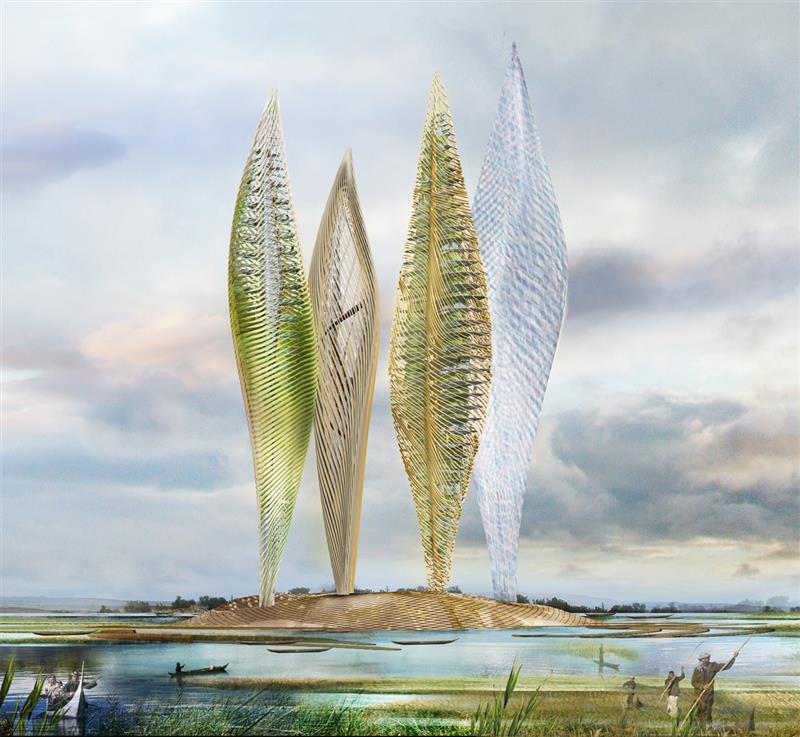

The weaving elements of the skin encapsulate tubes that take the water through a capillary system from the marshes upward. The skin functions as a filtration system to clean the marshes’ water. Woven between the main structural tubes are solar members in the form of operable fins that automatically control the porosity of the skin and regulate the exposure of internal spaces to the sun and wind. Their adaptive movement changes the appearance of the structures throughout the day and the seasons. The four structures are connected at the water level with a seashell-like base where common amenities are located.

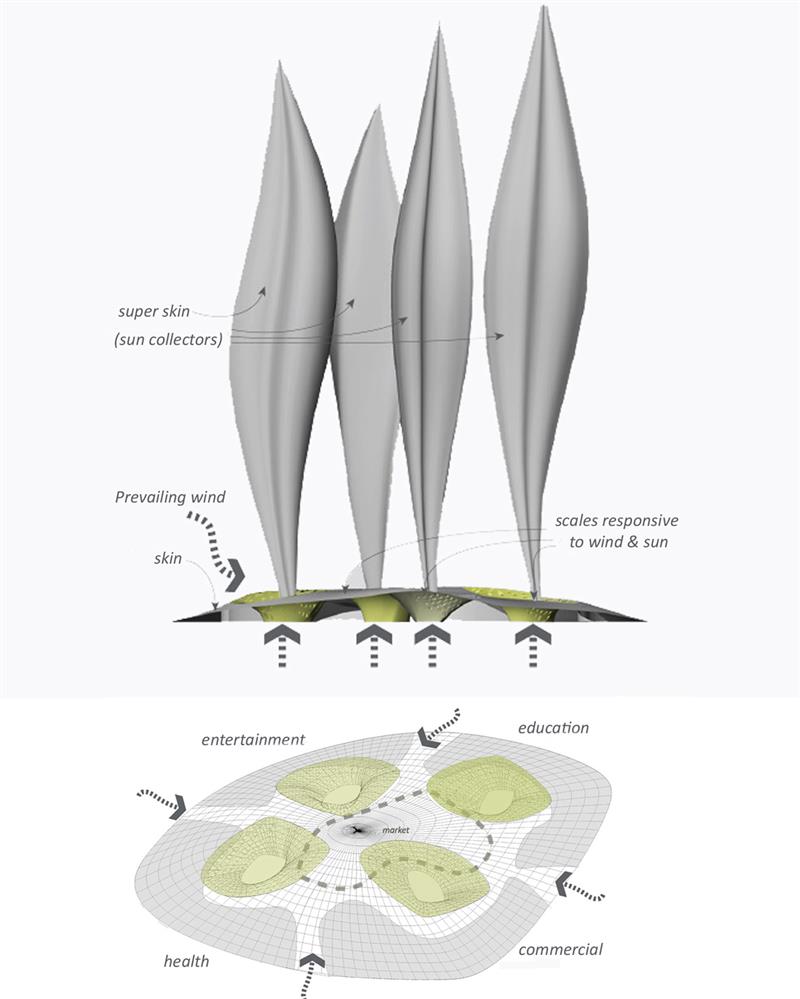
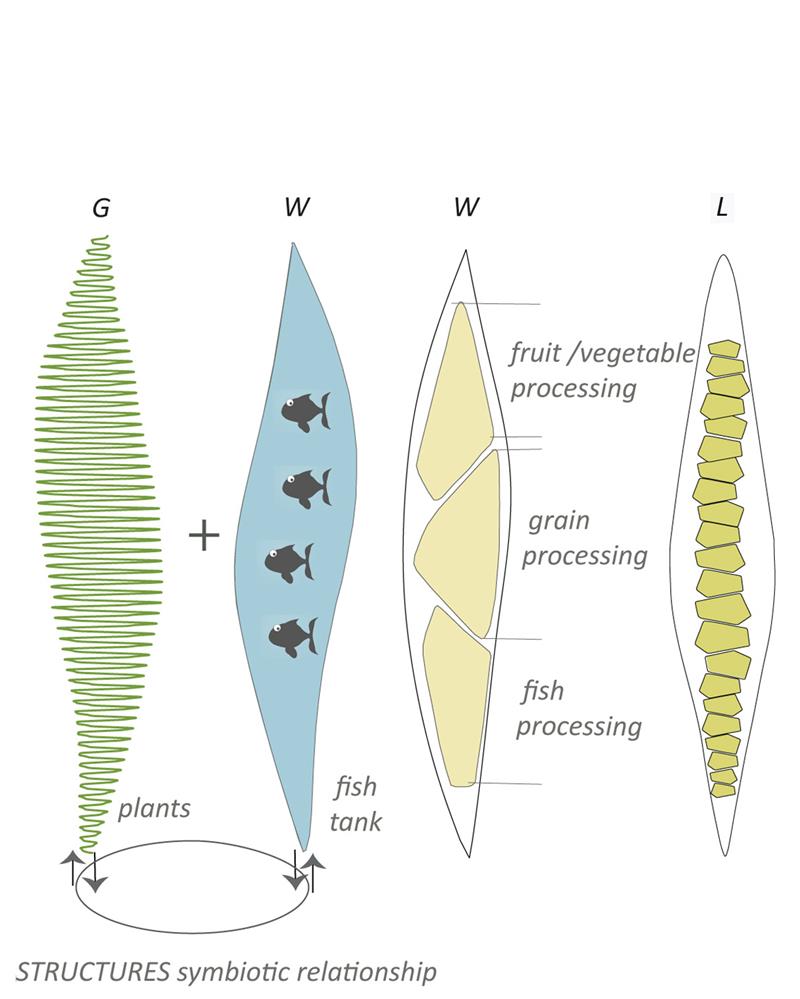
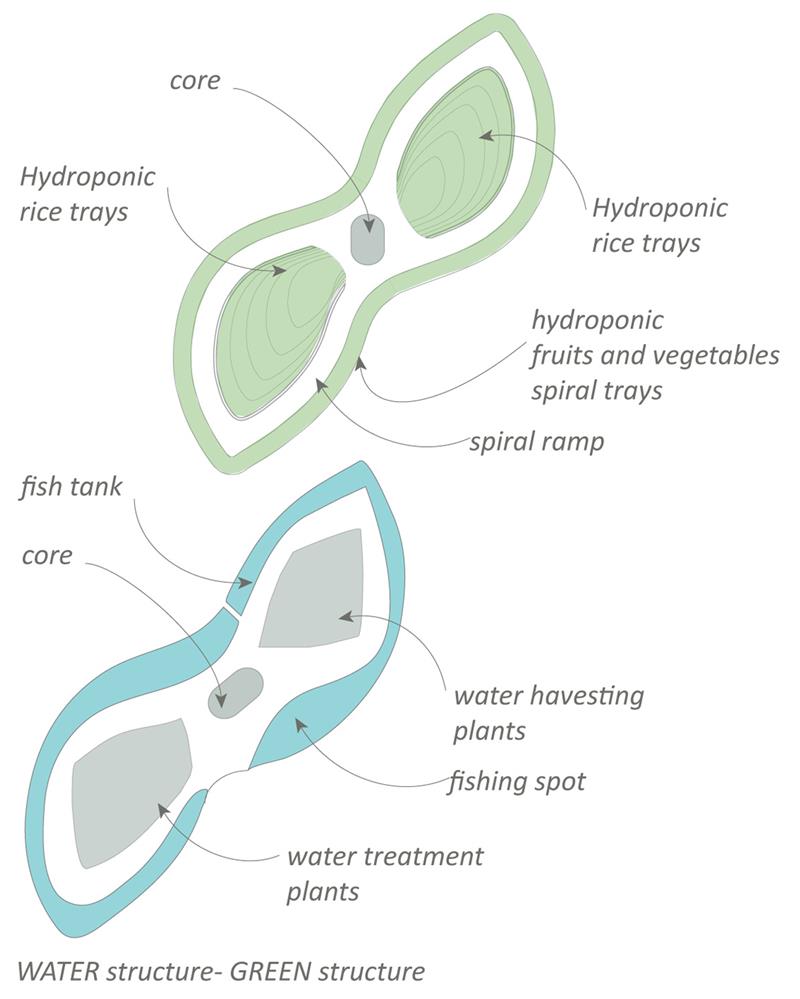
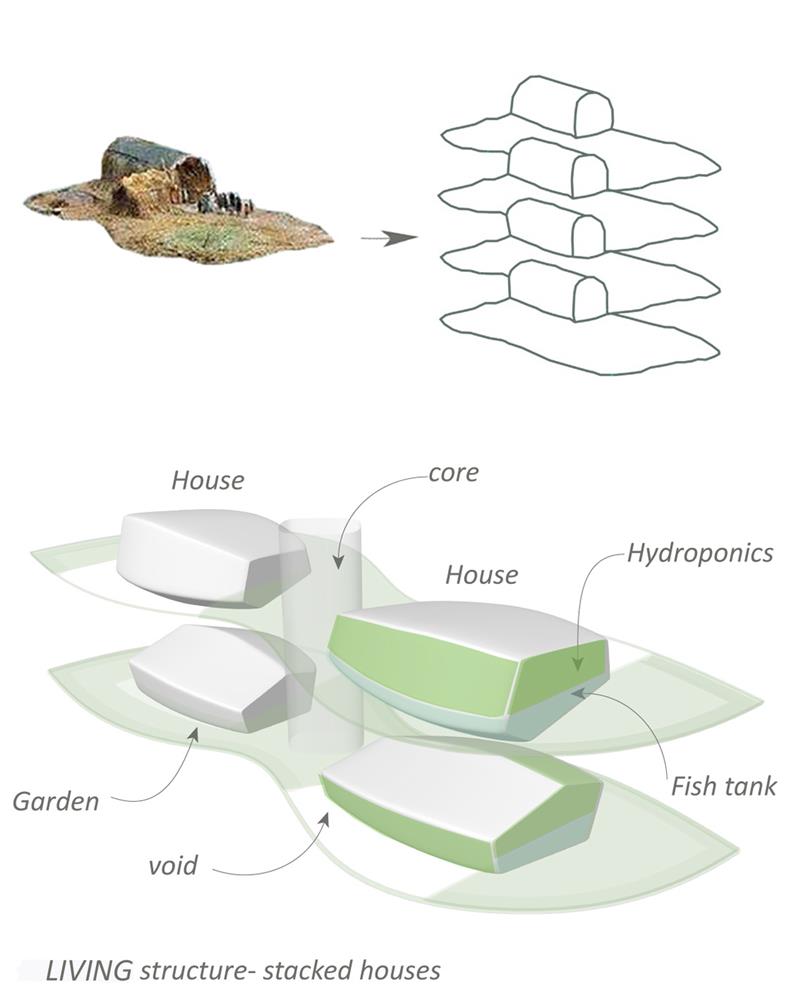

Project team: Zayad Motlib, Raya Ani, Eslam Baker

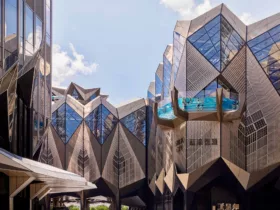
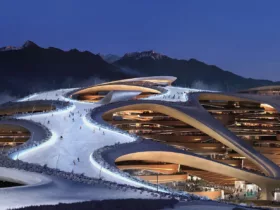













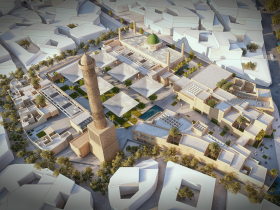





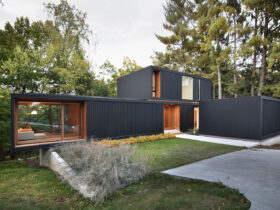

Leave a Reply